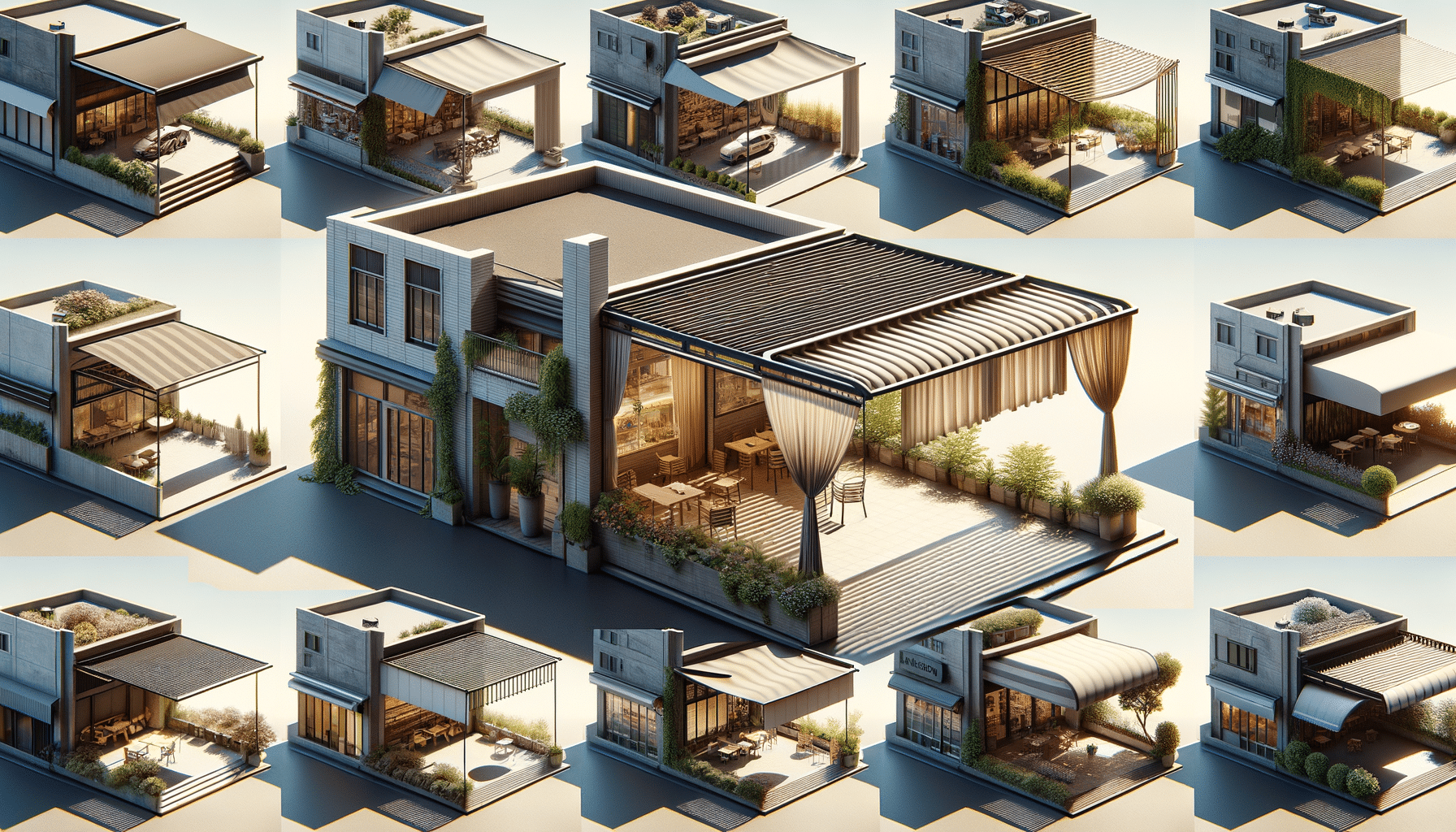Harnessing the Dual Functionality of Awnings and Overhangs
Awnings and overhangs are not merely decorative additions to structures, but also serve practical purposes, enhancing the overall functionality and aesthetic appeal of the space.

The Aesthetic Appeal of Awnings and Overhangs
Awnings and overhangs have long been appreciated for their ability to enhance the visual appeal of a building. These structures can transform a plain façade into an inviting and dynamic space. The variety of materials, colors, and designs available means that there is an option to suit every architectural style, from the sleek lines of modern buildings to the intricate details of historic homes.
One of the key benefits of incorporating awnings and overhangs is their ability to add depth and character to a building. Awnings can create a sense of rhythm and proportion, drawing the eye and highlighting architectural features. Overhangs, on the other hand, can provide a subtle, elegant extension of the roofline, offering a seamless transition between the building and its surroundings.
Moreover, these structures can be customized to reflect personal taste or brand identity. Businesses, in particular, can use awnings to display logos or company colors, making them an integral part of their marketing strategy. Homeowners may choose vibrant colors or patterns to express their personality or complement their garden landscaping. The creative possibilities are endless, making awnings and overhangs a favorite among designers and architects alike.
Practical Benefits: Protection from the Elements
Beyond their aesthetic contribution, awnings and overhangs play a crucial role in protecting buildings and their occupants from the elements. By providing shade, these structures can significantly reduce the amount of direct sunlight entering a building, which helps in maintaining a cooler indoor environment during hot weather. This not only enhances comfort but can also lead to substantial energy savings by reducing the reliance on air conditioning systems.
In addition to sun protection, awnings and overhangs offer shelter from rain, snow, and wind. They can prevent water from pooling near entrances, reducing the risk of slips and falls. This protective function is particularly valuable in regions with harsh weather conditions, where overhangs can help preserve the structural integrity of a building by minimizing weather-related wear and tear.
Furthermore, by shielding windows and doors from direct exposure, awnings and overhangs can extend the lifespan of these components, preventing damage such as warping or fading. This protective aspect underscores the practical value of these structures, making them a wise investment for both residential and commercial properties.
Energy Efficiency and Environmental Impact
The energy efficiency of a building can be significantly enhanced by the strategic use of awnings and overhangs. By reducing the amount of solar heat gain, these structures contribute to a more stable indoor temperature, decreasing the need for artificial cooling. This not only lowers energy bills but also reduces the building’s carbon footprint, aligning with sustainable building practices.
Research indicates that awnings can reduce cooling energy by up to 25% during peak summer months. This reduction in energy consumption not only benefits the environment but also adds to the long-term financial savings for property owners. Additionally, the materials used in awnings and overhangs can be chosen for their environmental friendliness, such as recycled fabrics or sustainably sourced wood.
Moreover, the presence of these structures can support passive solar design strategies. By carefully positioning awnings and overhangs, it is possible to optimize natural light usage, allowing for maximum sunlight in winter while providing shade in summer. This thoughtful approach to design demonstrates how awnings and overhangs can play a pivotal role in creating energy-efficient buildings.
Versatility and Customization Options
The versatility of awnings and overhangs is one of their most compelling features. Available in a wide range of materials such as canvas, metal, and polycarbonate, they can be tailored to meet specific needs and preferences. This adaptability ensures that they can complement any architectural style or functional requirement.
For instance, retractable awnings offer flexibility, allowing users to adjust the amount of coverage based on weather conditions or personal preference. This feature is particularly beneficial for outdoor spaces like patios or decks, where the option to enjoy the sun or shade can enhance the overall experience.
Customization extends beyond functionality to aesthetic elements as well. Property owners can choose from various shapes, colors, and patterns, creating a unique look that reflects their style. The ability to personalize these structures ensures that they are not only functional but also a true reflection of the owner’s vision and taste.
In commercial settings, this customization can serve as a branding tool, helping businesses stand out and attract customers. The combination of versatility and customization makes awnings and overhangs a valuable addition to any property.
Conclusion: Maximizing the Potential of Awnings and Overhangs
Awnings and overhangs are more than just decorative elements; they are multifaceted tools that enhance the functionality, aesthetics, and efficiency of a building. By offering protection from the elements, contributing to energy efficiency, and providing endless customization options, these structures prove to be a valuable investment for both residential and commercial properties.
As we continue to prioritize sustainability and energy efficiency in building design, the role of awnings and overhangs becomes increasingly significant. They offer a practical solution to modern architectural challenges, demonstrating that functionality and beauty can coexist harmoniously.
For those looking to enhance their property, considering the installation of awnings or overhangs could be a step towards achieving a more comfortable, efficient, and visually appealing space. As we have explored, the potential of these structures is vast, and their benefits are manifold, making them a wise choice for any forward-thinking property owner.